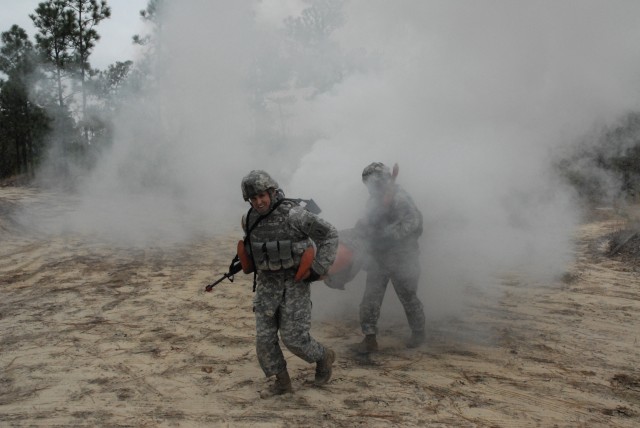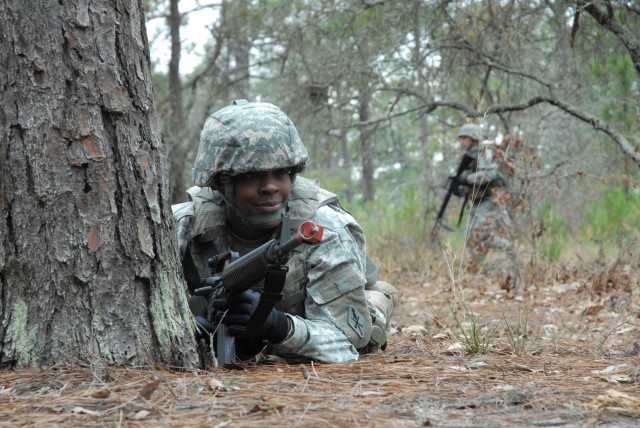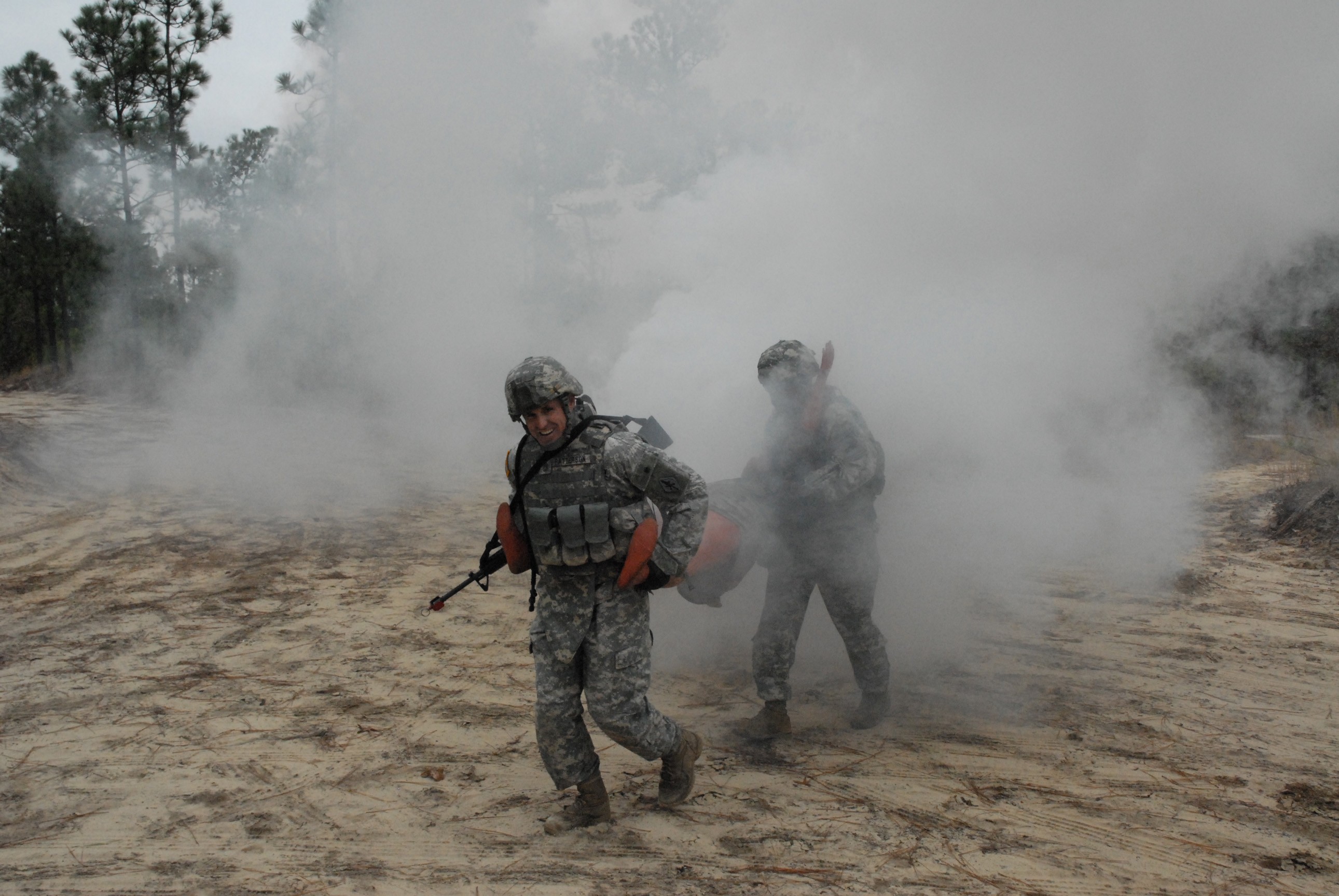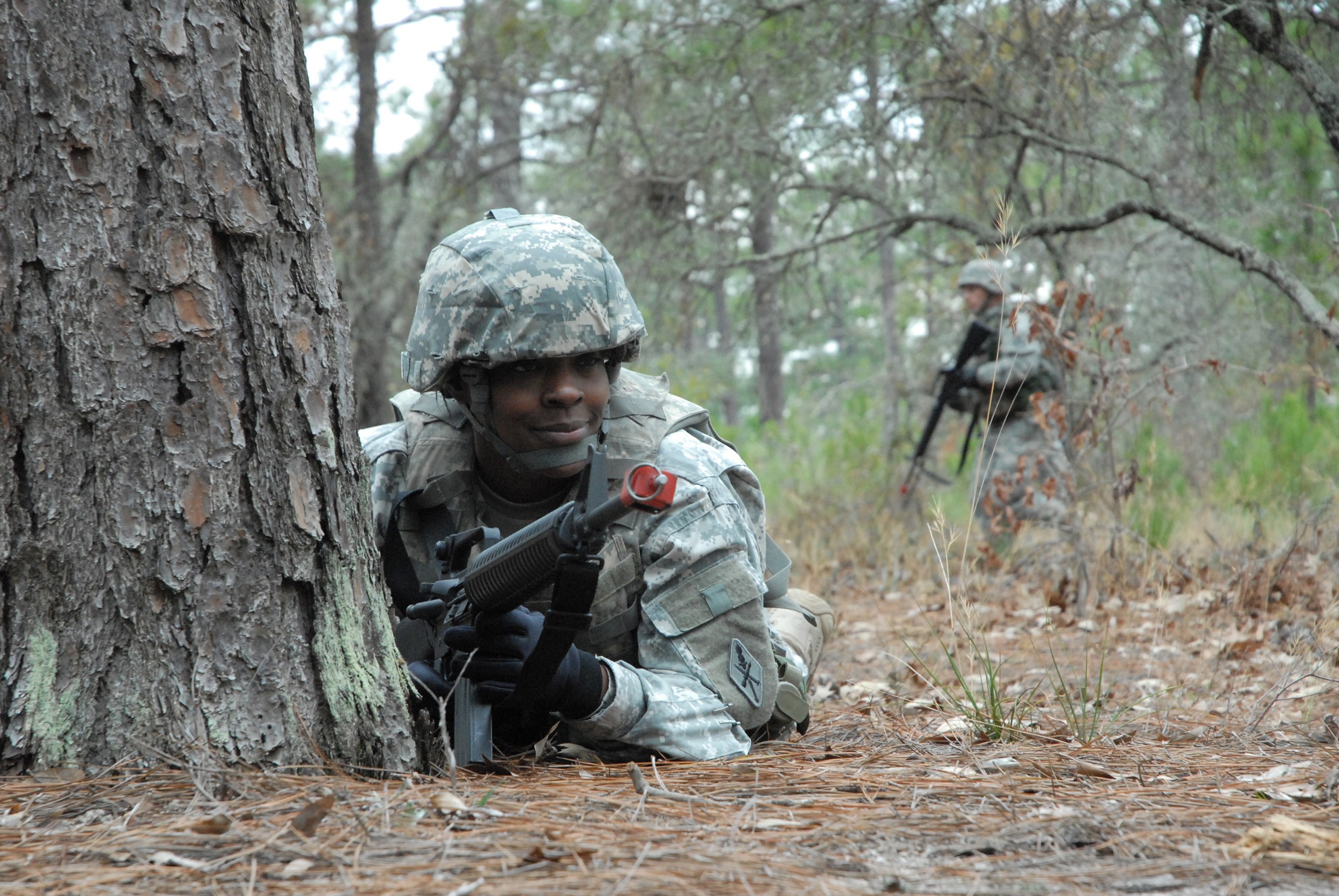Just as the Army transformed the Advanced Individual Training environment by phasing out drill sergeants and replacing them with platoon sergeants, training those new leaders has undergone a metamorphosis as well.
"The two-week AIT platoon sergeant course at Victory University has undergone multiple changes since it was first introduced in November 2007 in order to meet the demands of the Army," said VU's Deputy Director Jackie Ortiz.
In the 15 months since its inception, the course has shifted its focus from the classroom to performance under fire.
"When I first got here, I asked the students, 'What keeps you up at night' What aren't you prepared for''" said VU's Director Lt. Col. Ken Royalty. "The reoccurring theme was, 'I don't know my warrior tasks and battle drills as well as I should. My Soldiers know them better than I do.'"
It was comments like that that led Royalty to refocus the course. More time is now spent on those warrior tasks and battle drills. Also, instead of having the faculty of VU teaching the material, the students lead the classroom instruction, and then they go out and execute the tasks and drills during a field-training exercise.
According to Sgt. 1st Class Craig Sterrette, a VU instructor, as the face of the battlefield has changed, it has become vital for Soldiers in every military occupational specialty to be proficient in skills that were once reserved for combat-arms Soldiers. He added that using peer-to-peer level training helps build the confidence of the students in their ability to pass on their knowledge.
"The students leave here with a better understanding of how to teach and facilitate this training," he said. "They understand what they need to do to continue to build and enhance that training."
To be selected as an AIT platoon sergeant, an NCO must be a staff sergeant promotable or a sergeant first class. While the majority of those NCOs selected have experience as a platoon sergeant in an operational unit, being responsible for training Initial Entry Training Soldiers is a new challenge.
"I was used to just supervising," said Sgt. 1st Class Cynthia Hodge, HHC, 61st Ordnance Battalion, Aberdeen Proving Ground, Md. "It's good the course gives us an up-close look at what and how IET Soldiers are being trained. Soldiers are looking for you to be the subject matter expert. So you have to know what you are talking about, know what you are doing, and you have to be able to teach the Soldier everything. You have to reinforce what their drill sergeants taught them. It keeps you up on your game."
"In my last unit we stuck with mounted operations because that is what we did on almost a daily basis. Some of the warrior tasks and battle drills I haven't done in a while. So, getting out here and going back over the dismounted operations is a nice transition," said Sgt. 1st Class Chris Patterson, Company B, 832nd Ordnance Battalion, Redstone Arsenal, Ala.
Once students leave the course, they still have access to the instructors. The training material for every warrior task and battle drill can be downloaded through VU's Web site.
"At the end of the day, we want to produce a confident platoon sergeant capable of leading and training Soldiers successfully in an AIT environment," Royalty said. "These skills include but are not limited to a proficiency in standardized PT, warrior tasks and battle drills, and an understanding of the dynamics of Initial Entry Training."
In addition to the course at Fort Jackson, Victory University oversees AIT Platoon Sergeant Courses at Aberdeen Proving Ground, Md., Fort Lee, Va., Fort Sam Houston, Texas, Fort Leonard Wood, Mo., and Fort Huachuca, Ariz.
Michael.A.Glasch@us.army.mil




Social Sharing